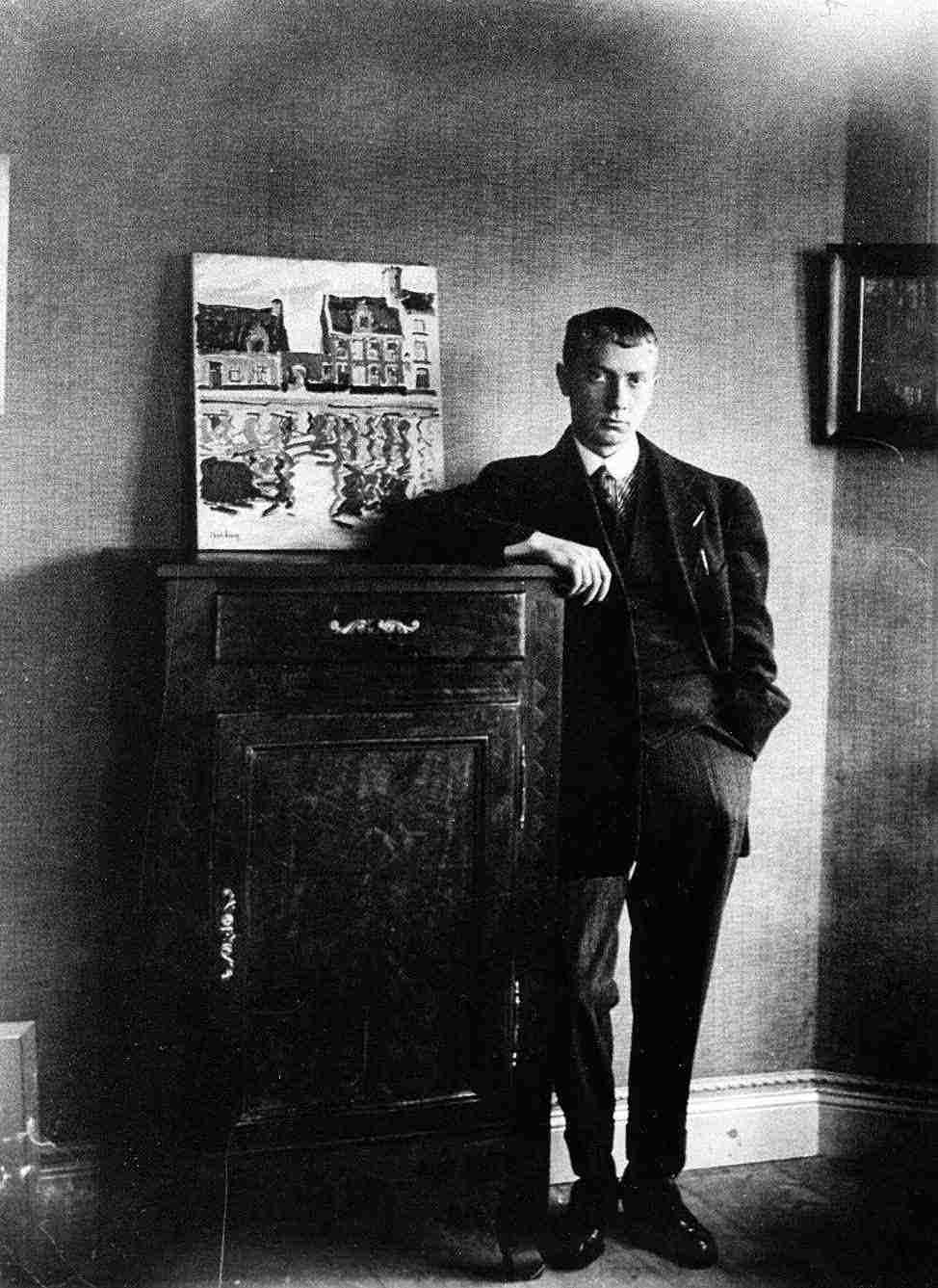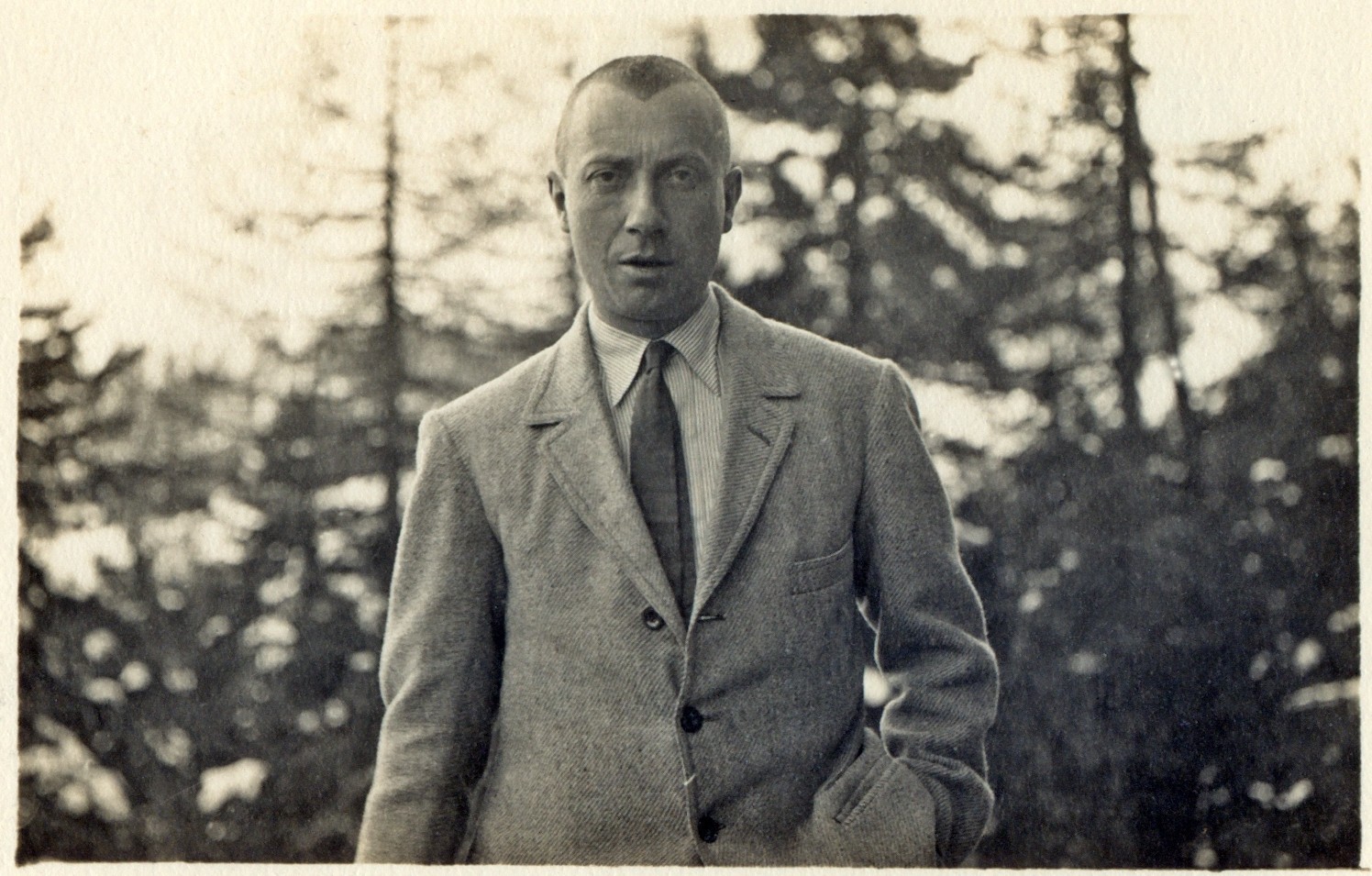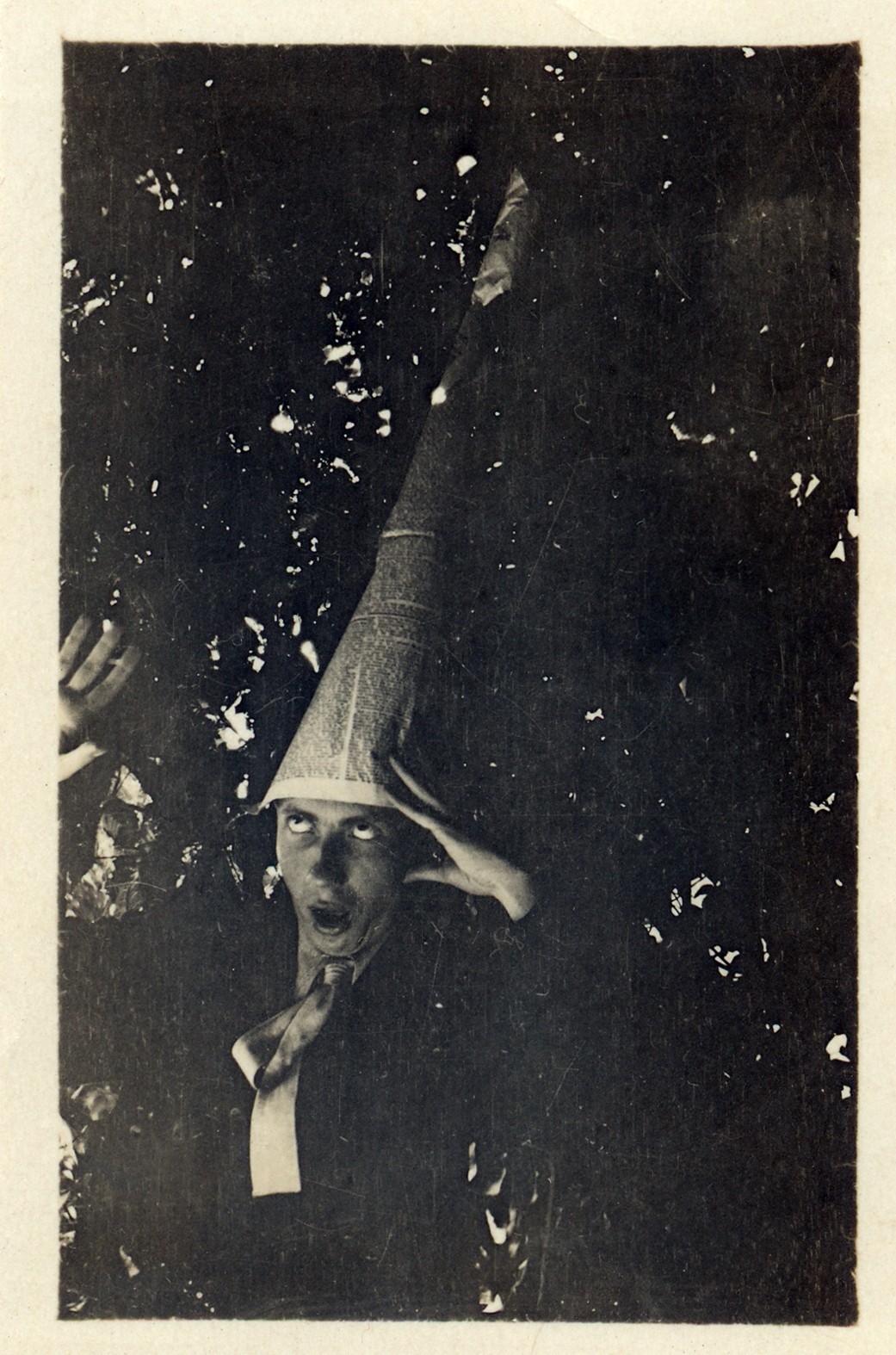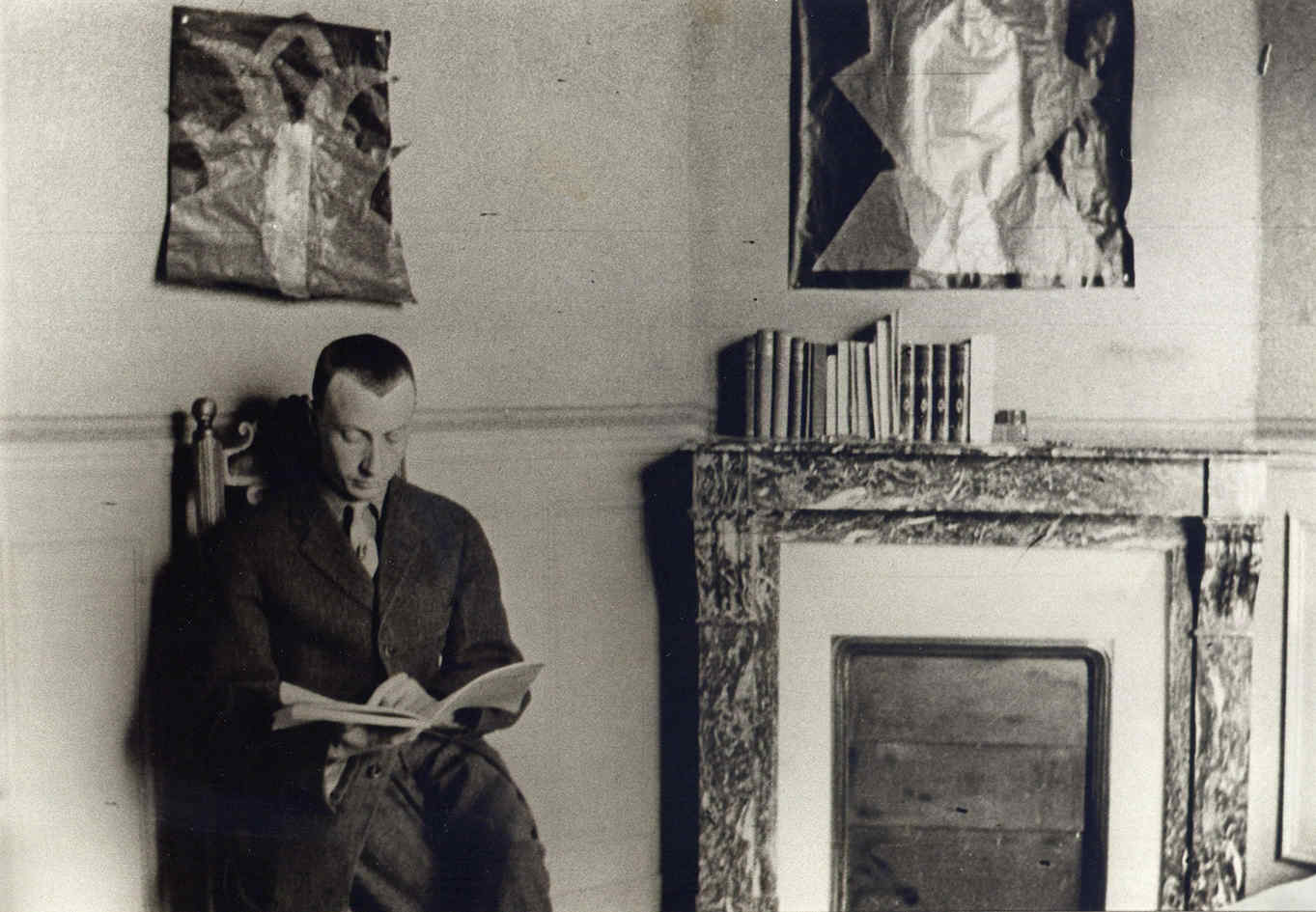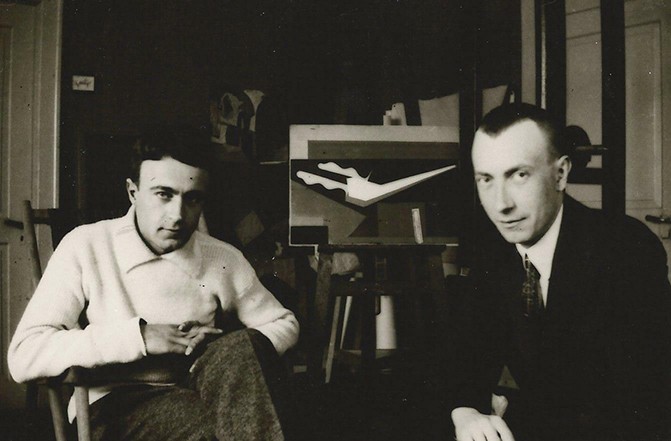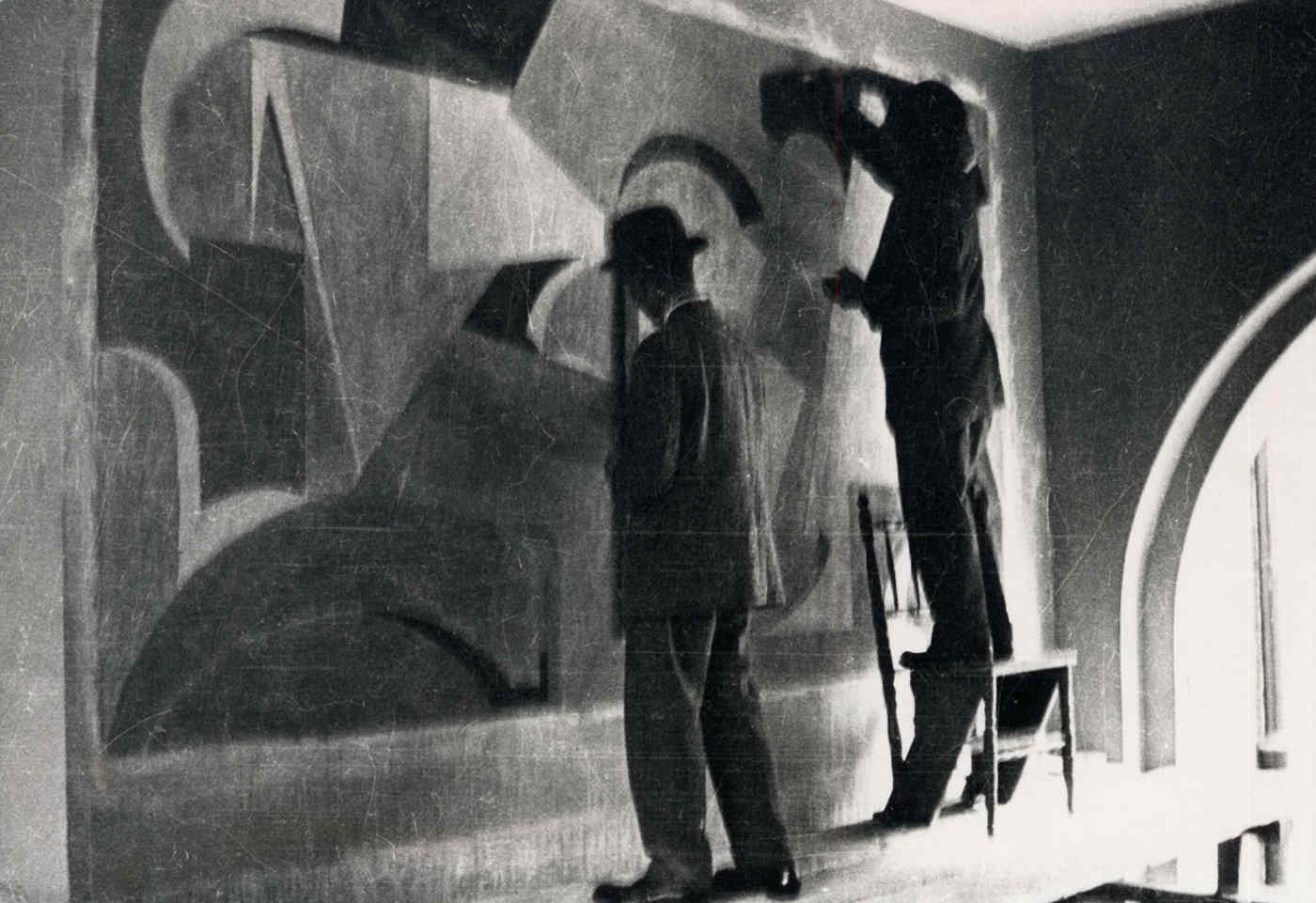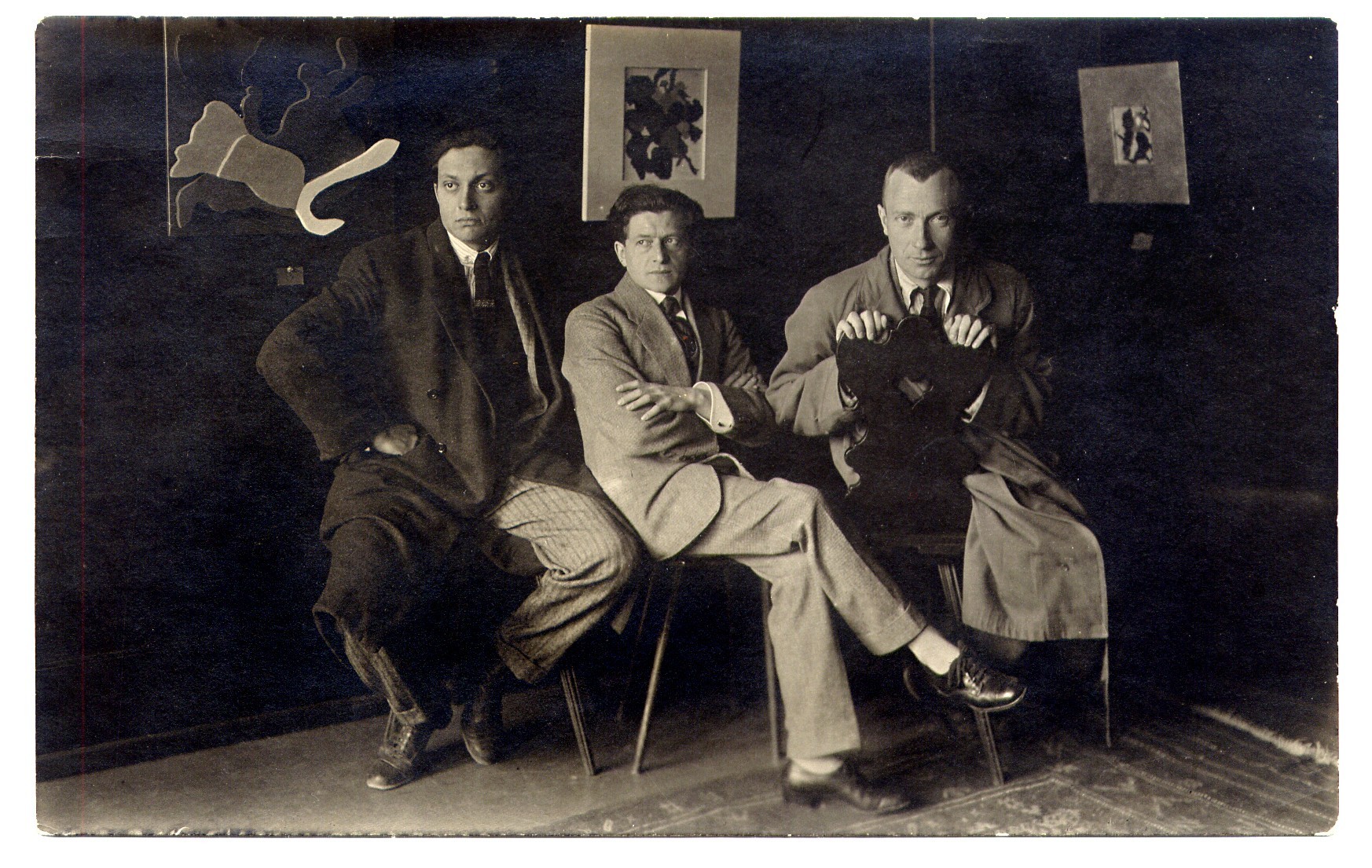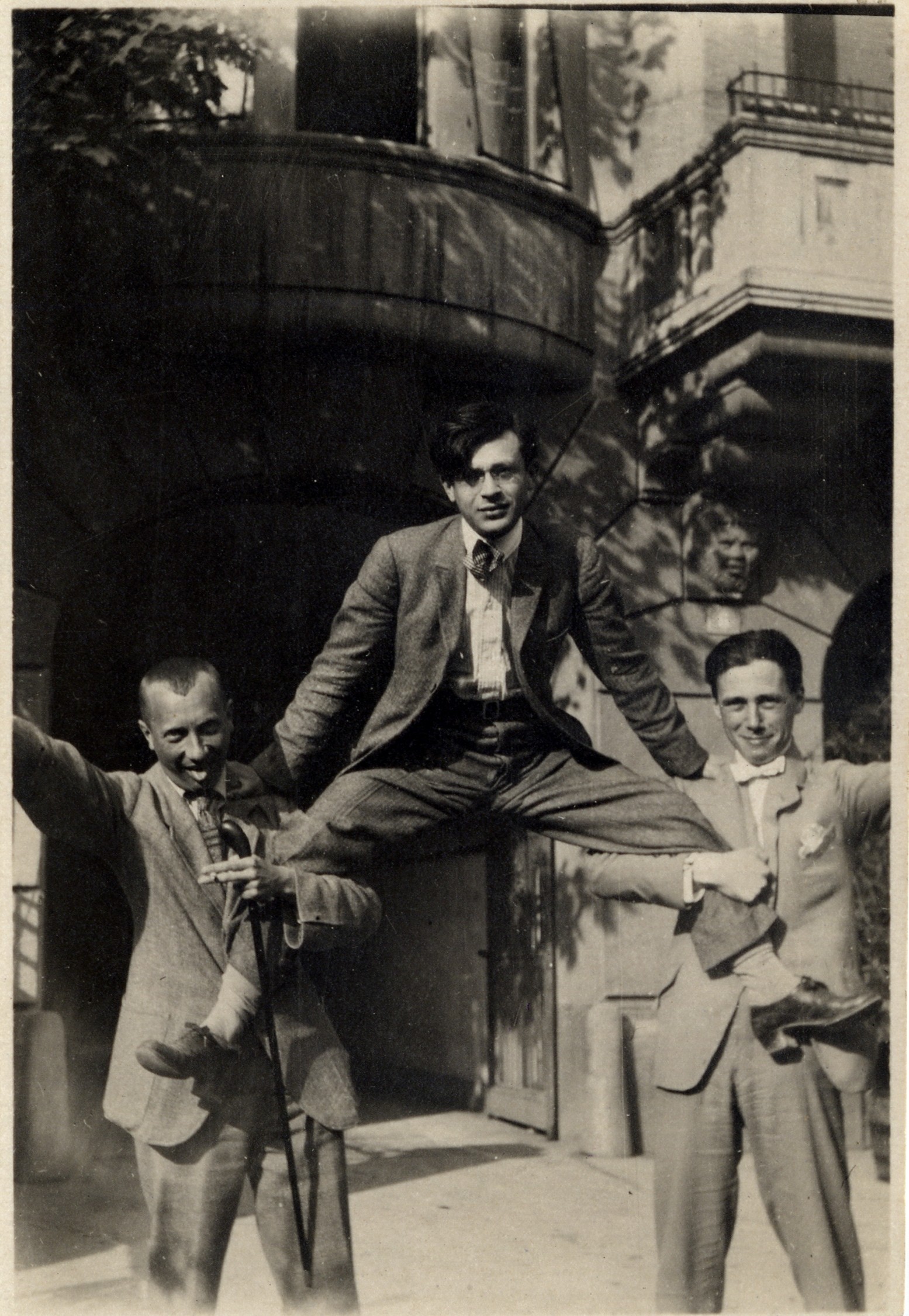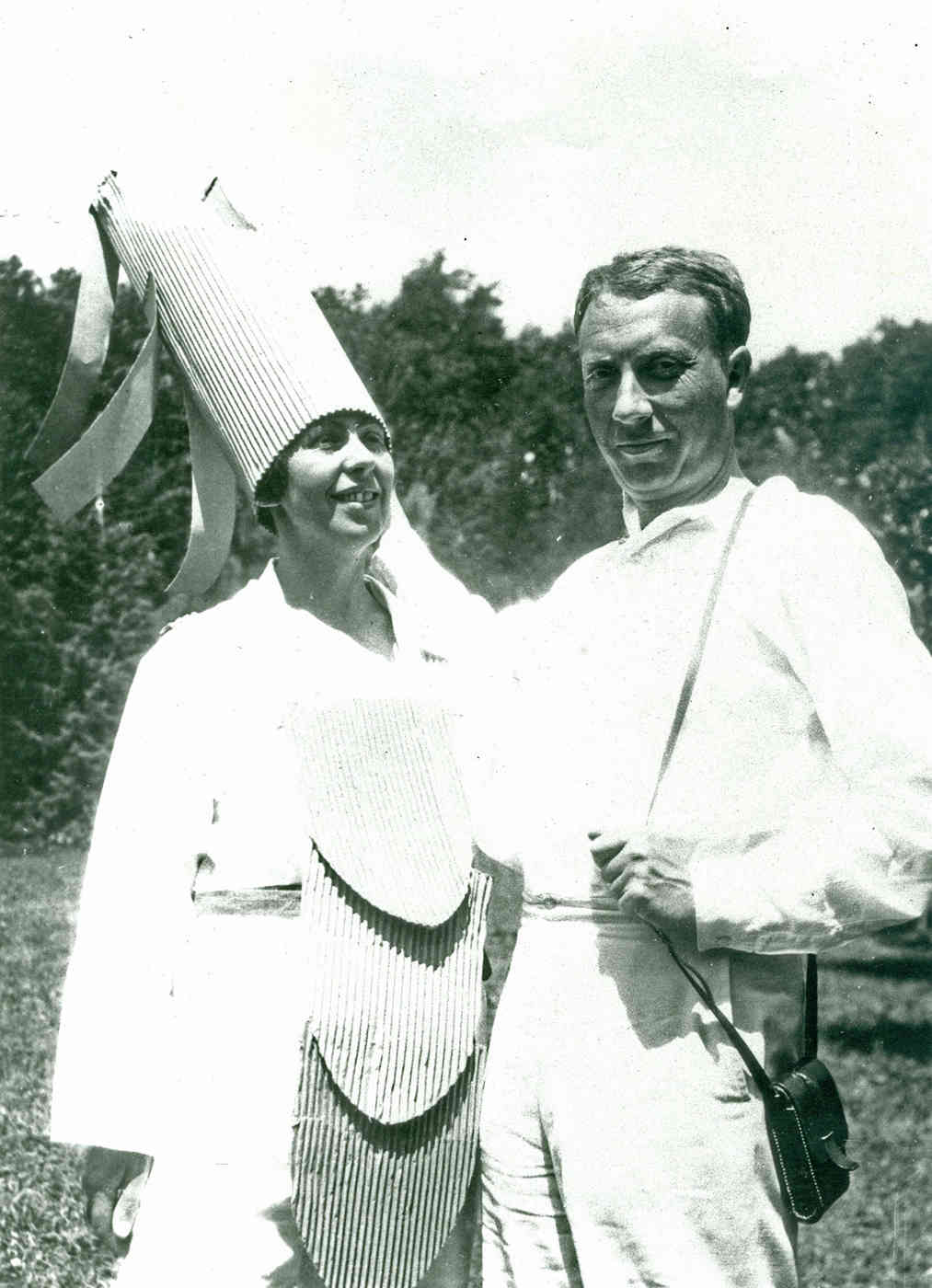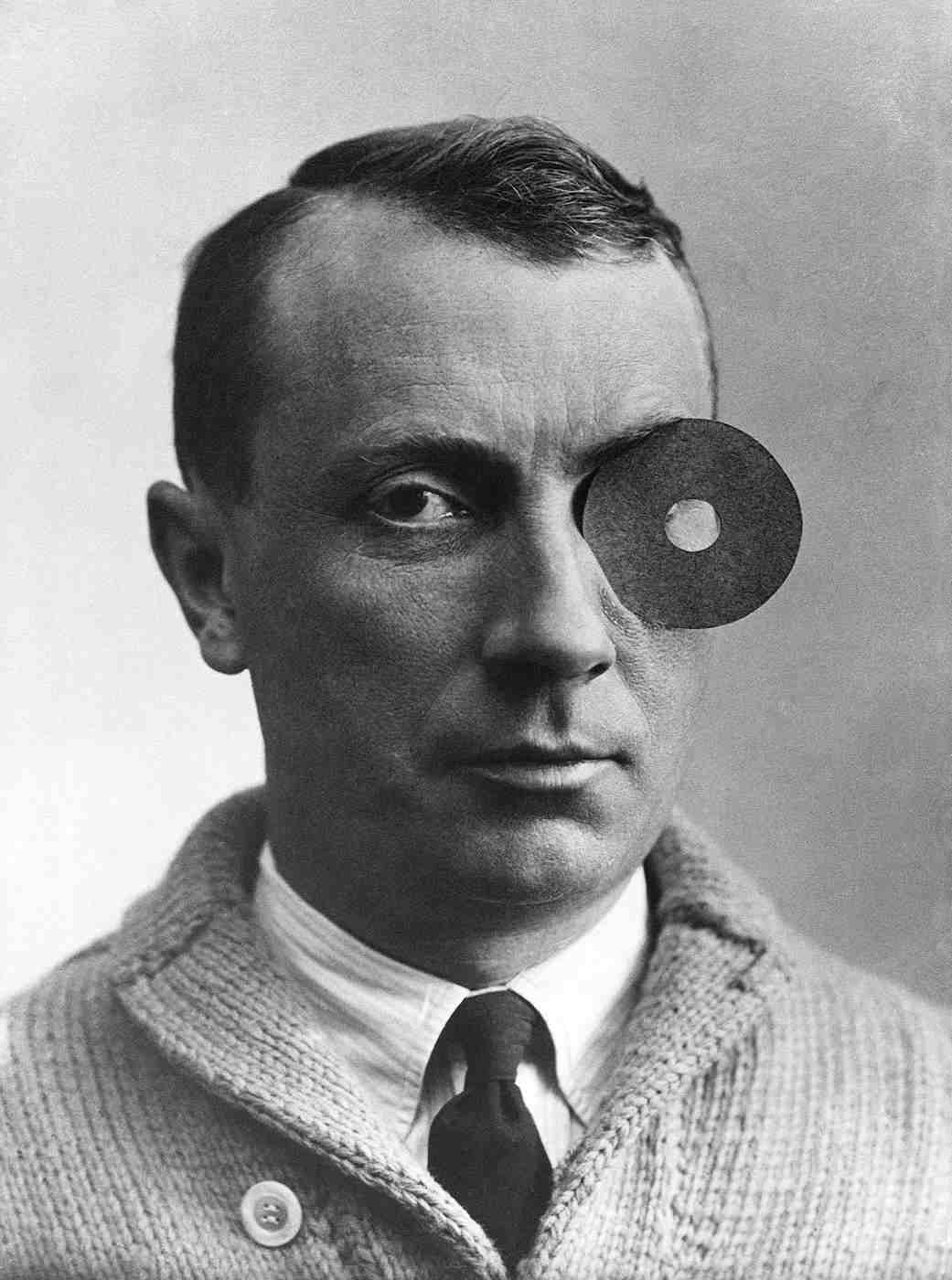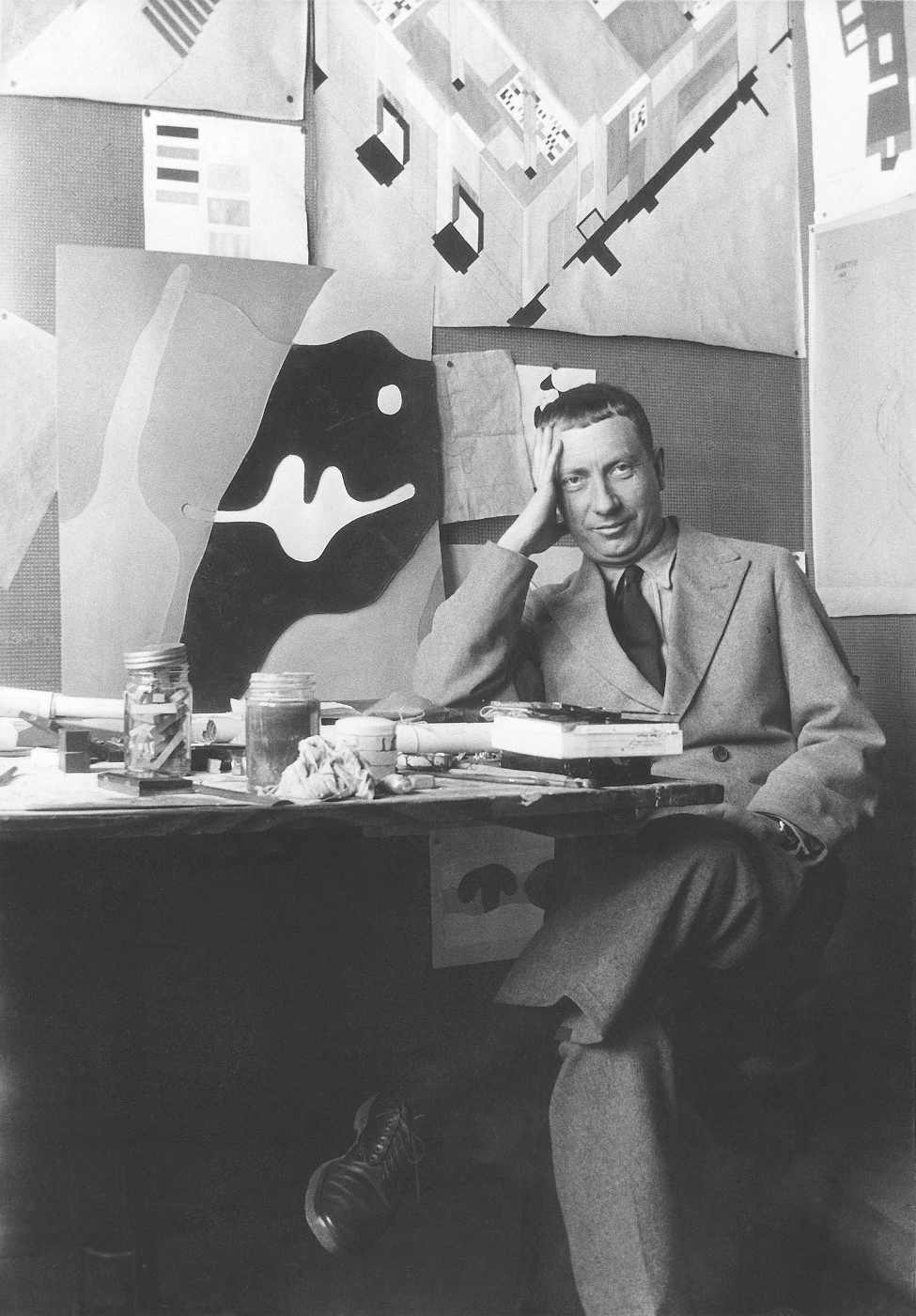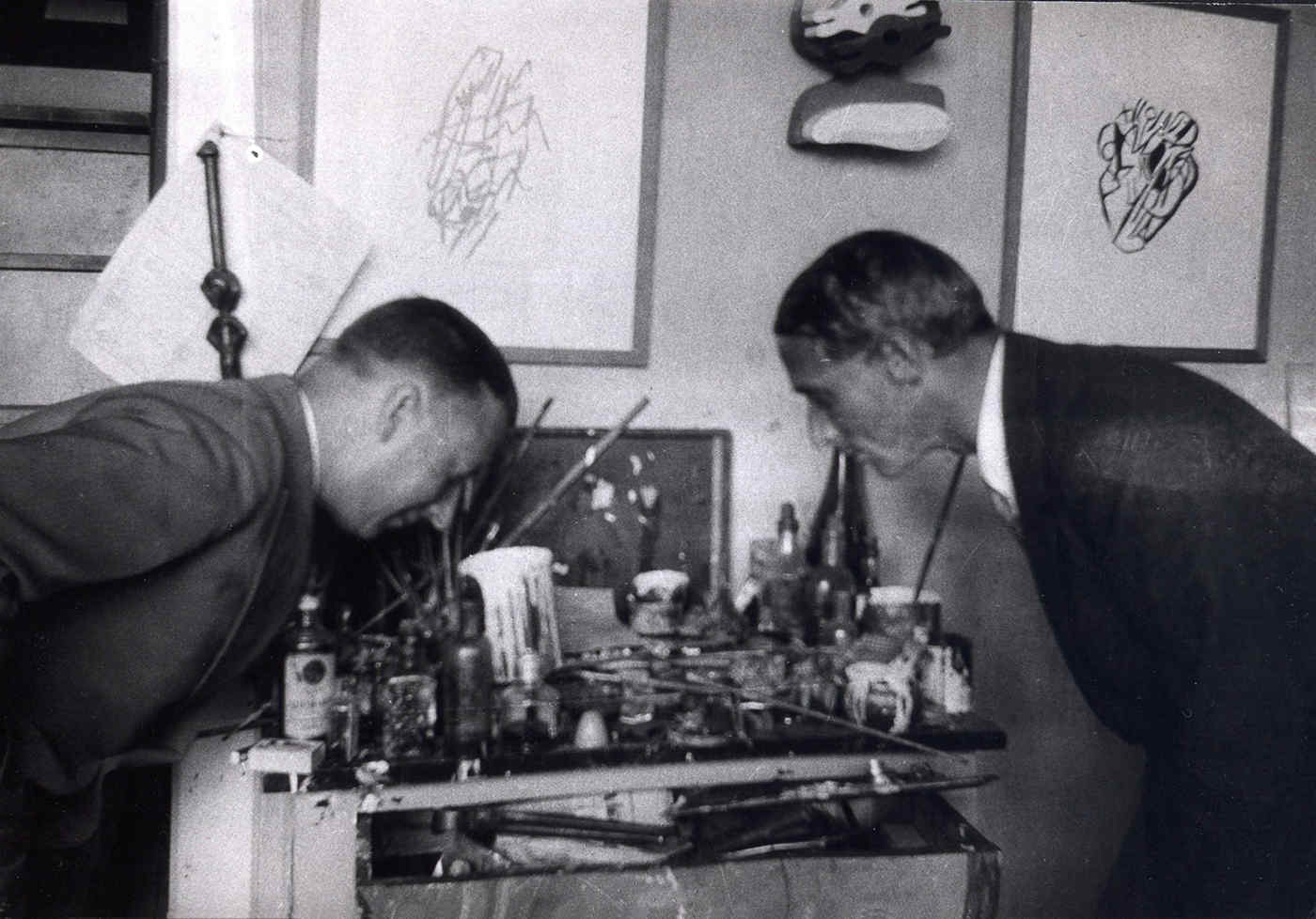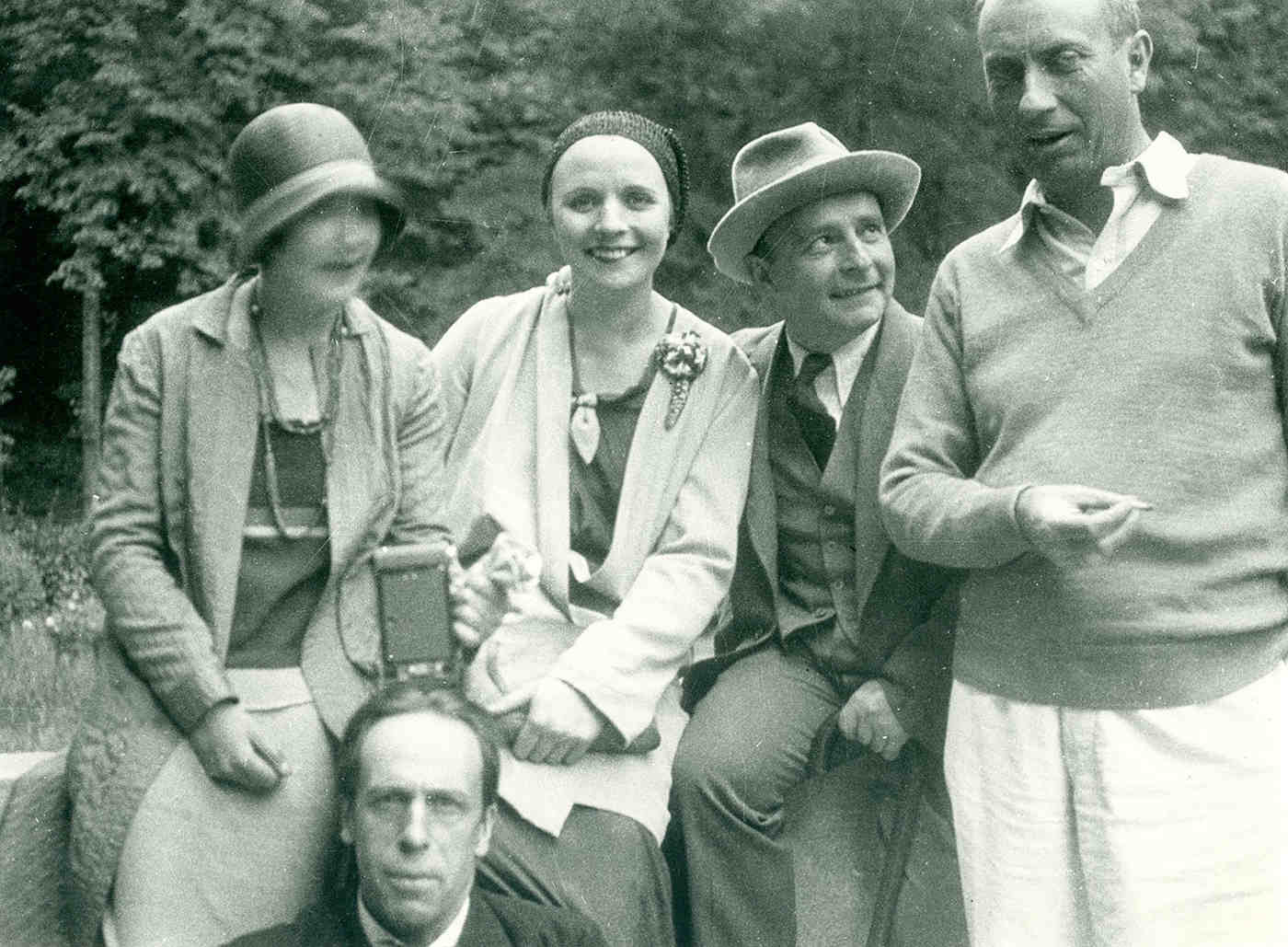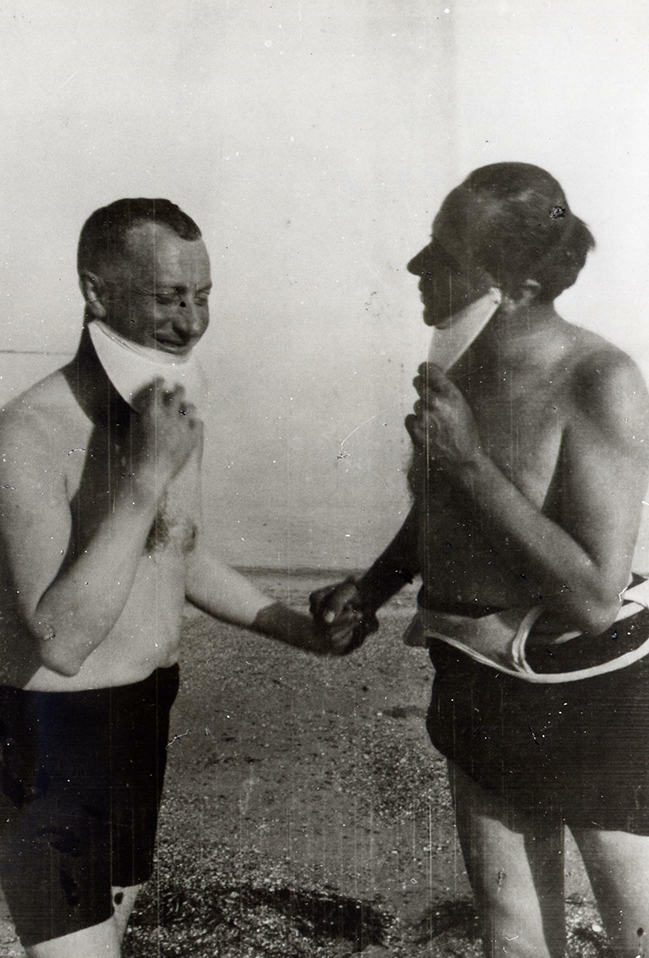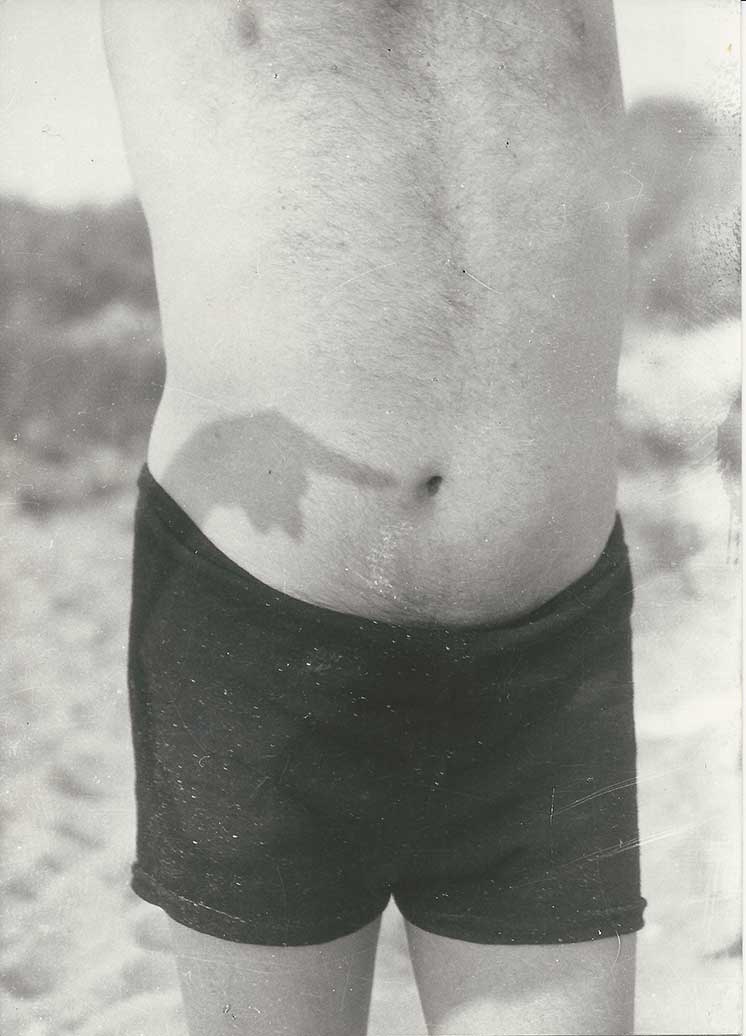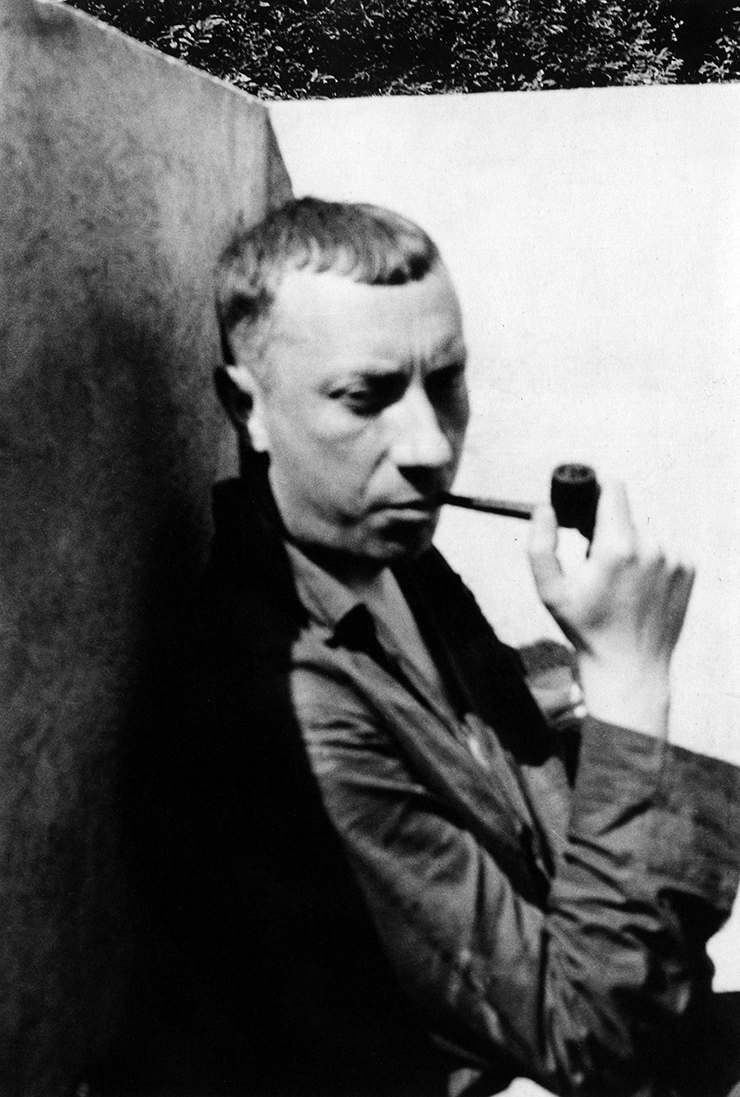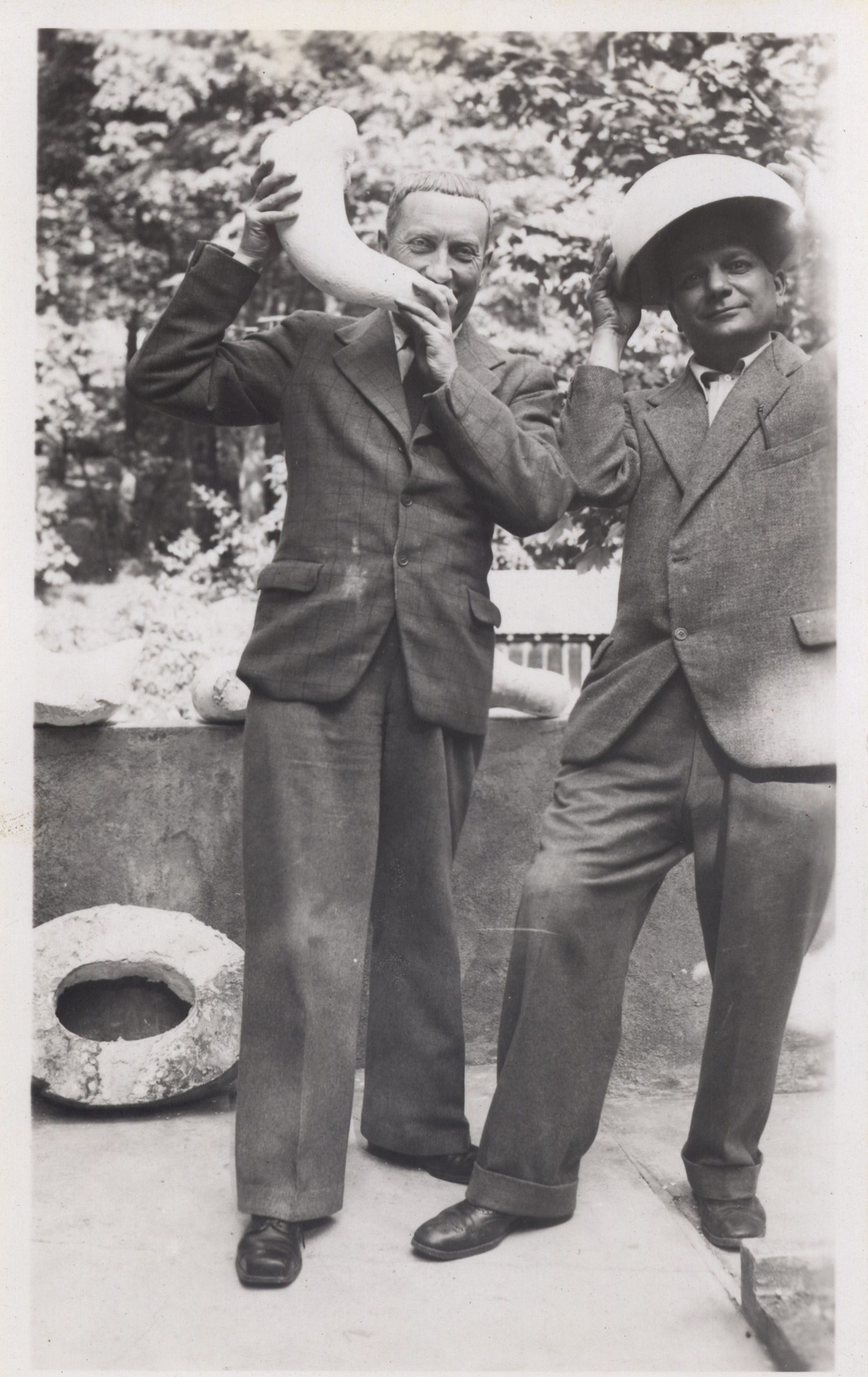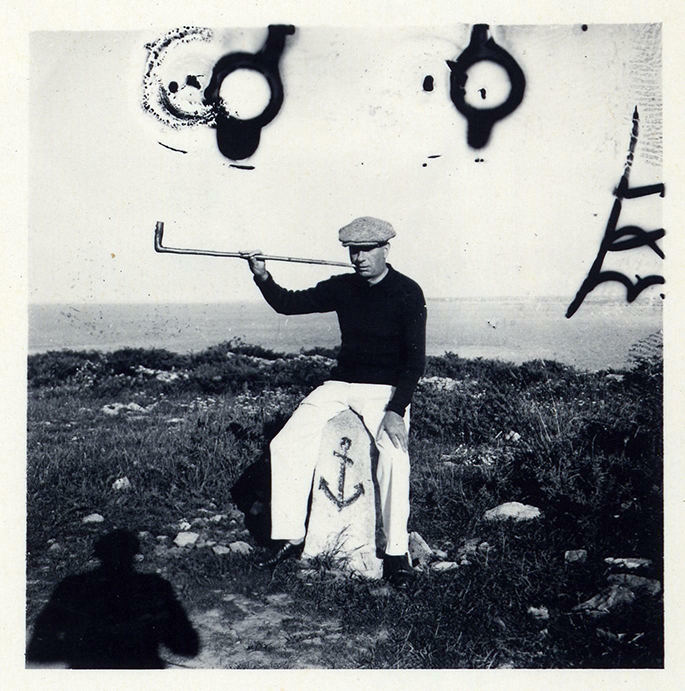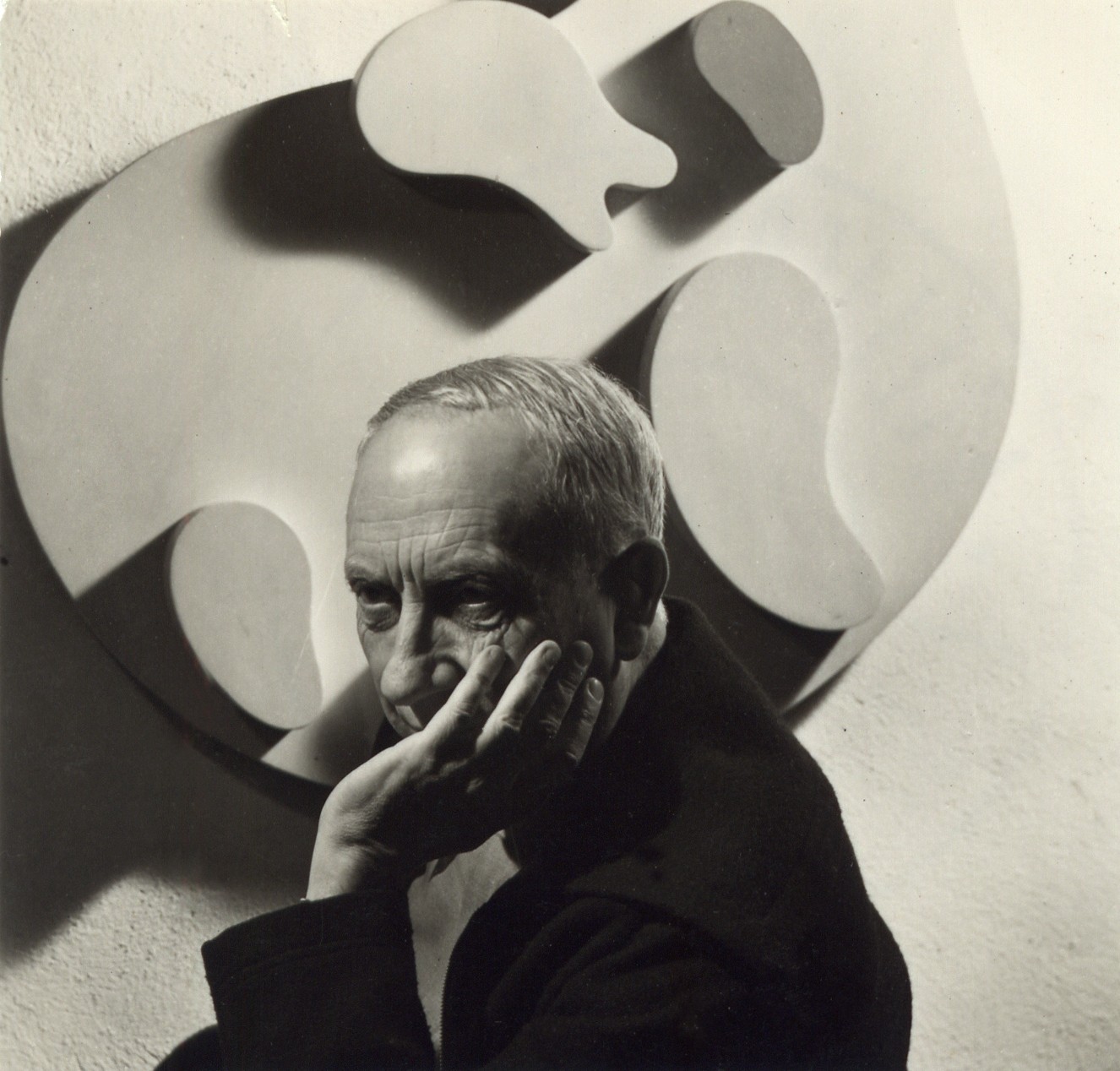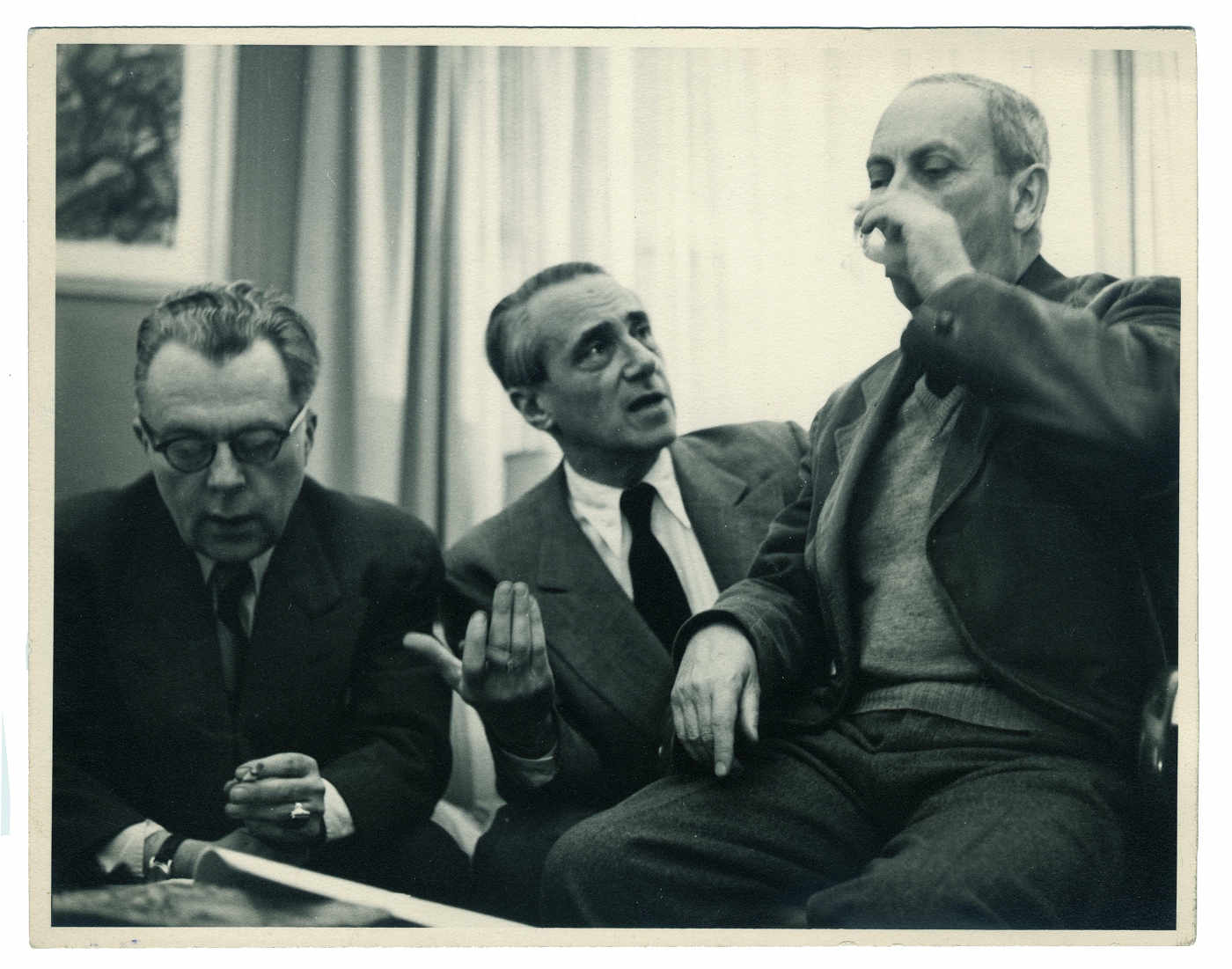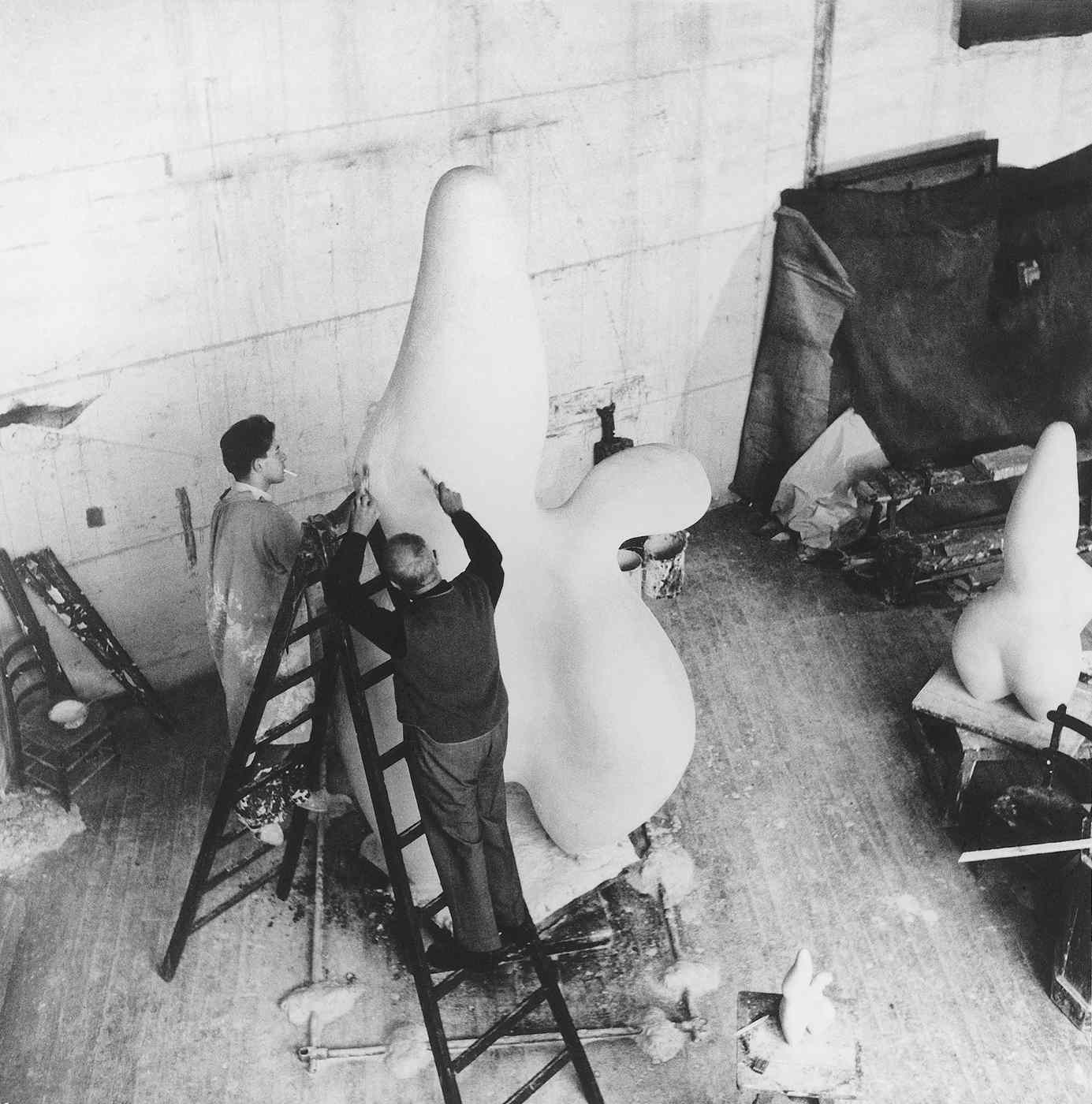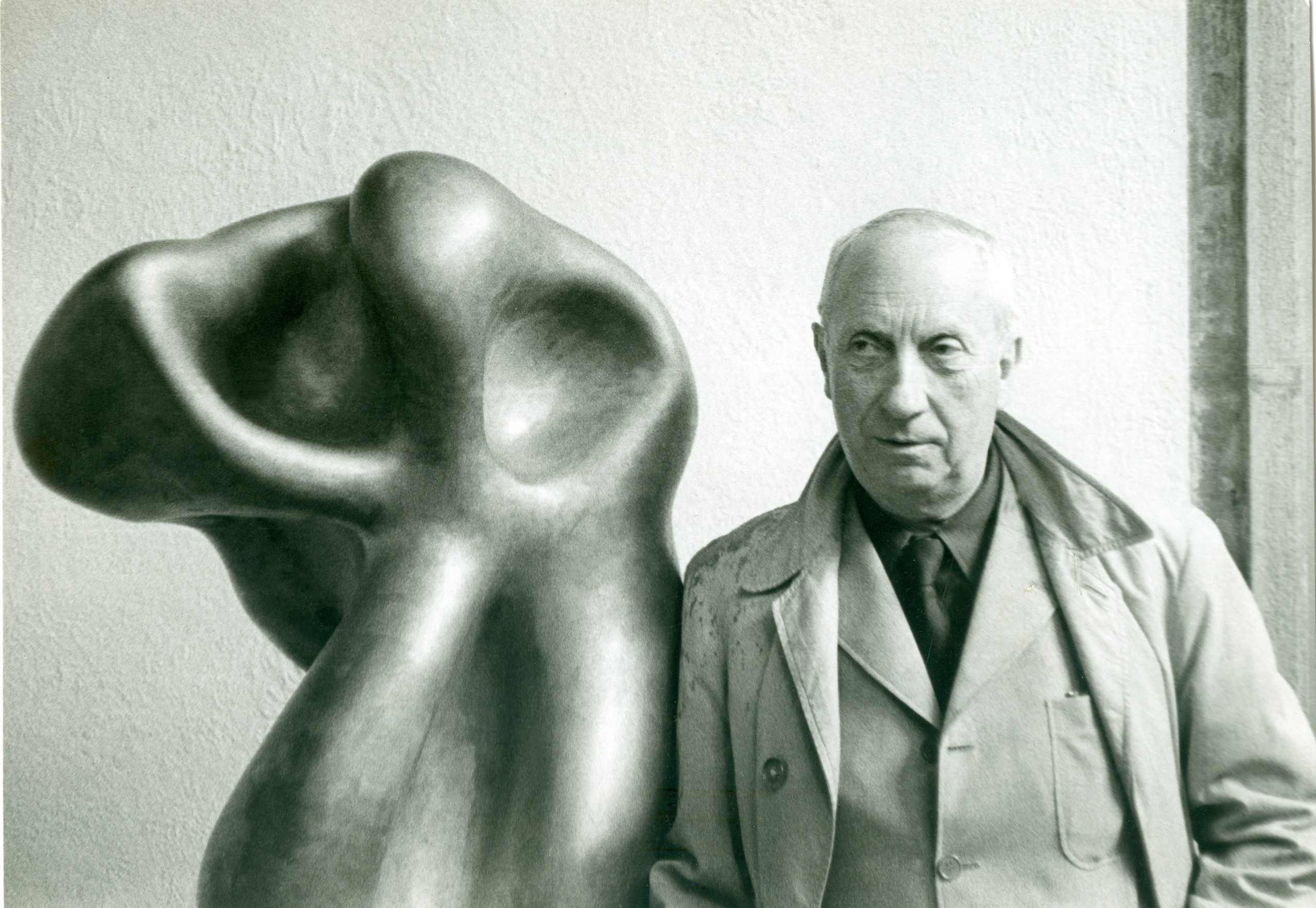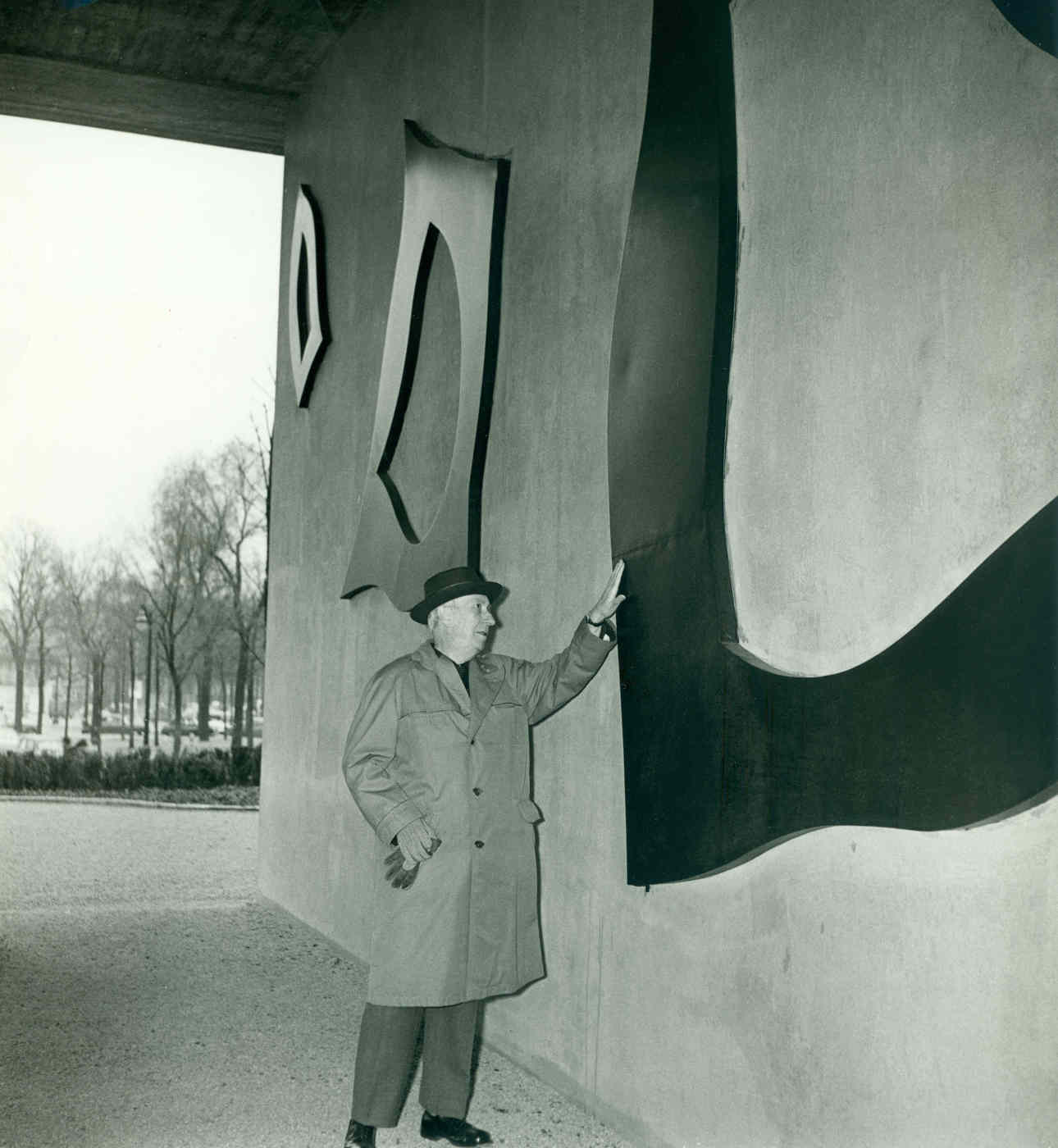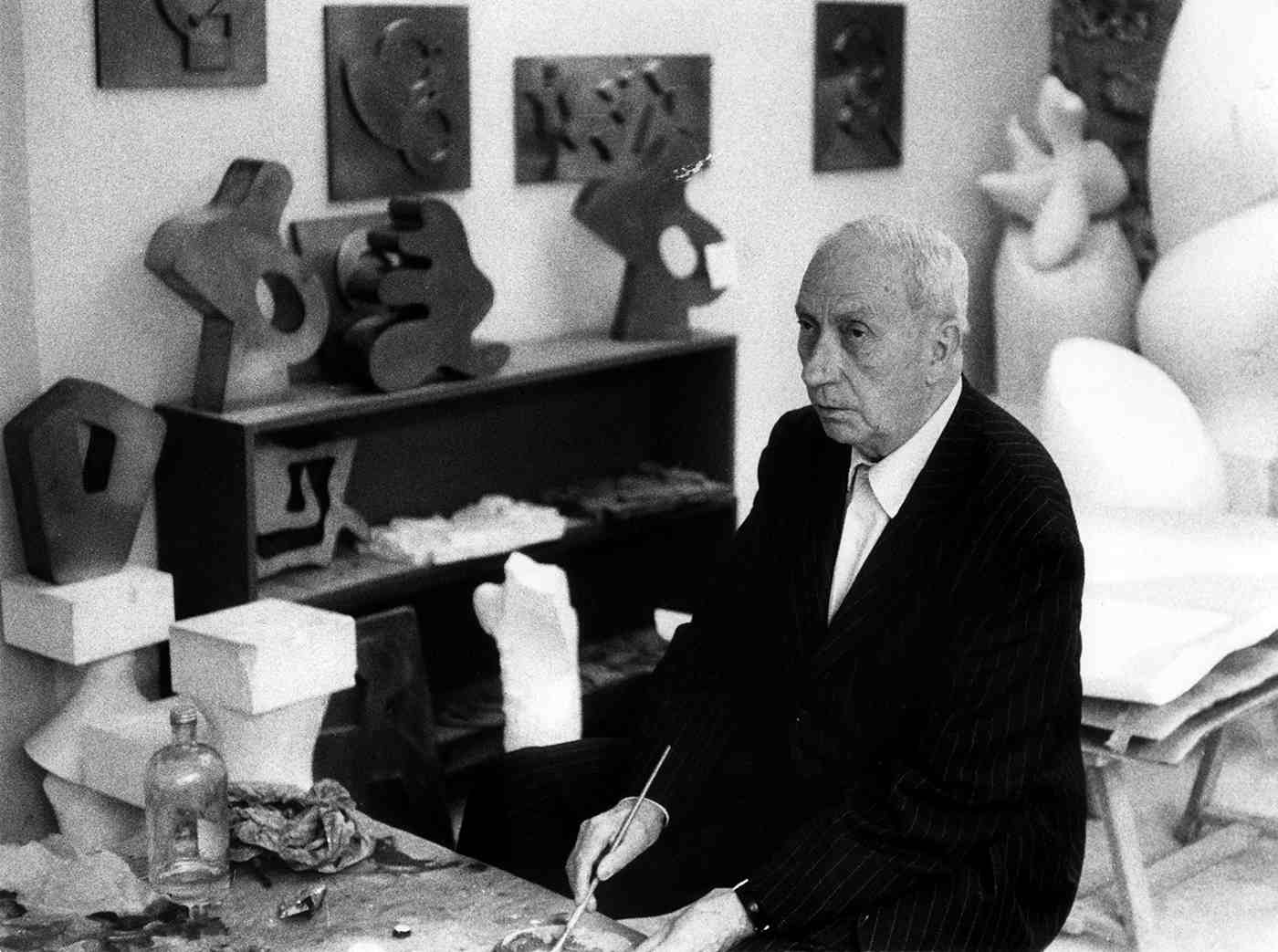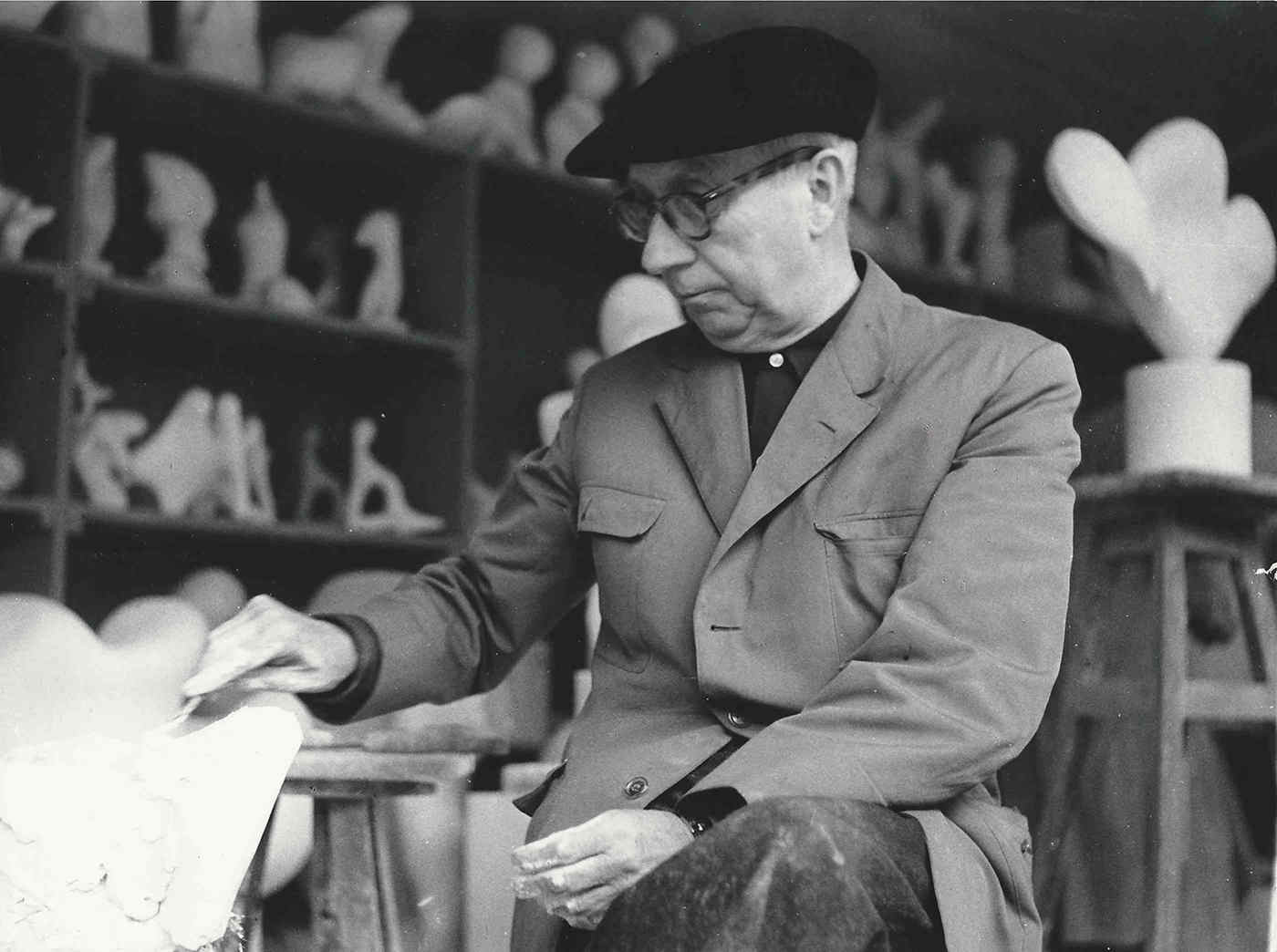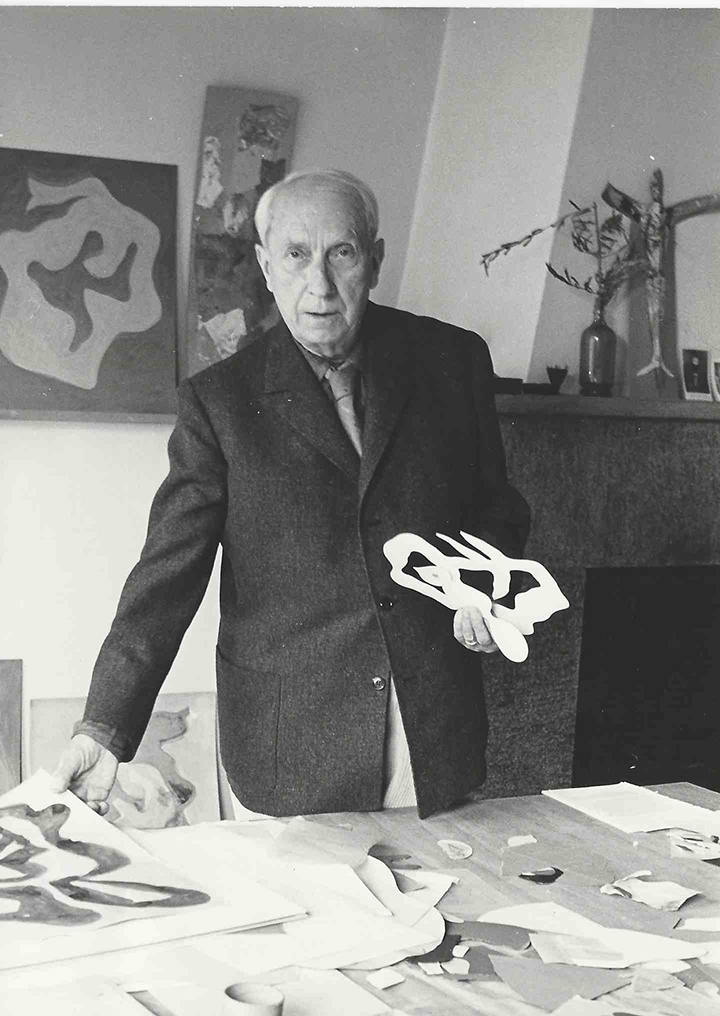BIOGRAPHY
1886–1929
On September 16, 1886 Hans Peter Wilhelm Arp was born in Strasbourg to German-Alsatian parents. From 1901 to 1908 he attended art schools in Strasburg and Weimar, as well as the Académie Julian in Paris. In 1910, together with Walter Helbig and Oscar Lüthy, he established the Swiss artists’ association Der Moderne Bund in Luzerne. For a few weeks in 1913, he worked in Herwarth Walden’s Berlin gallery Der Sturm. At the Deutscher Werkbund exhibition in Cologne, he met Max Ernst. In 1916 Arp co-founded the Dada movement in Zurich with Hugo Ball, Richard Huelsenbeck and Tristan Tzara. He made the acquaintance of the Dadas Hannah Höch, Raoul Hausmann and Kurt Schwitters in Berlin in 1918. Four years later, in 1922, he married Sophie Taeuber. In 1925, he exhibited alongside de Chirico, Ernst, Klee, Man Ray, Masson, Miró and Picasso at the first exhibition of the surrealists at the Paris Galerie Pierre. Arp became a French citizen in 1926. At that time, Arp, Sophie Taeuber-Arp and Theo van Doesburg assumed the redesign of the interior of the Aubette in Strasbourg. The following year, in 1927, he had his first solo exhibition at the Galerie Surréaliste in Paris. Hans Arp and Sophie Taeuber-Arp moved to Clamart, a town outside of Paris, 1929.
1930–1944
Arp began making sculpture in the round as well as his Papiers dechirés in 1930. His poems were published in the French journals Minotaure and Le Surréalisme au Service de la Révolution. During this period, he was also an active member of Cercle et Carré and Abstraction Création. Two major exhibitions at the Museum of Modern Art in New York in 1936, Cubism and Abstract Art and Fantastic Art, Dada, Surrealism, featured his work. Hans Arp also joined the Swiss artists’ association Allianz. In 1940, he and Sophie Taeuber-Arp fled from the German occupation to Grasse in the South of France. There he began the series Papiers froissés. At the end of 1942, the couple traveled to Zurich, where Sophie Taeuber-Arp died in January 1943. Hans Arp attempted to come to terms with her death in his poetry and drawings.
1945–1966
At the end of the war, Hans Arp returned to Clamart. In 1947, he began making sculpture again. His first solo exhibition in the United States of America took place in 1949. Walter Gropius commissioned a large-scale relief sculpture from Arp for the Harvard Graduate Center in Cambridge. Dreams and Projects, a book of text and woodcuts, was published by Curt Valentin in 1952. A year later, in 1953, Arp executed his first monumental sculpture Cloud Shepherd for the University of Caracas in Venezuela. A year later, he was awarded the Grand Prize for Sculpture at the 1954 Venice Biennial. The University of Caracas and the Paris branch of UNESCO gave him contracts for large-scale reliefs. In 1958, the Museum of Modern Art presented his first retrospective. The year 1959 was marked by his marriage to his second wife Marguerite Hagenbach and the acquisition of the property Ronco dei Fiori in Locarno, Switzerland. In 1961, he designed a monumental relief in aluminum for the University of Applied Sciences in Braunschweig, Germany. An enlargement of his sculpture Cloud Shepherd was installed outside of the university library in Bonn in 1961. The City of Cologne awarded Arp Stephan Lochner Medal and in Paris he received the distinction of the Grand Prix National des Arts. In 1965, the German government awarded him the Federal Cross of Merit. To commemorate the birth of Dada in 1916 at the Cabaret Voltaire in Zurich, a memorial plaque in the form of a navel was placed on the facade of the historical building. Hans Arp died of a heart attack in Basel on June 7, 1966 and was interred in Locarno.

